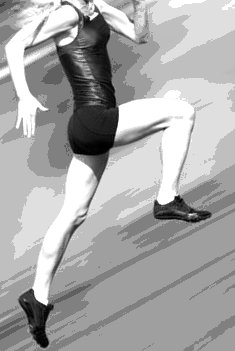Tech leap for robot leg
 Engineers have created an advanced new robotic leg, powered by artificial muscles.
Engineers have created an advanced new robotic leg, powered by artificial muscles.
Researchers from ETH Zurich and the Max Planck Institute for Intelligent Systems (MPI-IS) have created a robotic leg capable of agile movement across varied terrain.
The technology marks a departure from traditional motor-driven robots and brings new advancements to the field of robotics.
For nearly 70 years, robotic systems have relied on electric motors, a 200-year-old technology, to power their movements.
However, despite improvements in robotics, even the most advanced walking robots have lacked the mobility and adaptability of living creatures.
This limitation stems from their motor-based systems, which cannot replicate the dynamic movement of biological muscles.
A team, led by Robert Katzschmann from ETH Zurich and Christoph Keplinger from MPI-IS, has developed a robotic leg that uses electro-hydraulic muscles instead of motors, resulting in greater energy efficiency and enhanced movement capabilities.
“Our system doesn’t require heat sinks or fans for diffusing heat to the air,” co-researcher Toshihiko Fukushima explains, highlighting one of the leg’s key advantages over motor-driven counterparts.
The artificial muscles, known as HASELs (Hydraulically Amplified Self-healing Electrostatic actuators), mimic the function of biological muscles.
They consist of oil-filled plastic bags connected to a skeletal structure with tendons, providing a flexible system for movement.
When voltage is applied to the electrodes on these actuators, they contract and shorten, replicating the contraction of human muscles.
This muscle-powered system is not only more efficient than electric motors but also capable of high jumps and quick movements.
The electrostatic nature of the actuators prevents heat build-up, unlike motorised systems. “On the infrared image, it’s easy to see that the motorised leg consumes much more energy,” doctoral student Thomas Buchner explains, noting the superior efficiency of the new system.
A standout feature of the robotic leg is its adaptability to different terrains without the need for complex sensors. The leg’s electro-hydraulic muscles can detect obstacles and adjust accordingly.
This responsiveness is similar to how biological creatures navigate uneven surfaces.
“It’s no different with living creatures. If we can’t bend our knees, for example, walking on an uneven surface becomes much more difficult,” Katzschmann says.
The leg’s movement relies on two simple input signals - one to bend the joint and another to extend it.
This eliminates the need for constant feedback from sensors, which motorised robots often require.
The robotic leg can adjust to the surface it lands on, whether hard or soft, replicating the reflexive actions of animals.
Despite its promising capabilities, the technology remains in its early stages.
Currently, the leg is attached to a rod and can only jump in circles, but future developments may allow for free movement.
“Compared to walking robots with electric motors, our system is still limited,” Katzschmann admits, however, he is optimistic about the potential, envisioning future robots equipped with artificial muscles that could assist in rescue operations or other complex tasks.
The research opens new doors in soft robotics, where the use of artificial muscles could lead to more versatile and energy-efficient machines.
While heavy machinery may not yet benefit from this technology, applications such as soft robotic grippers could see significant advancements.
More details are available here. A demonstration can be seen below.








 Print
Print